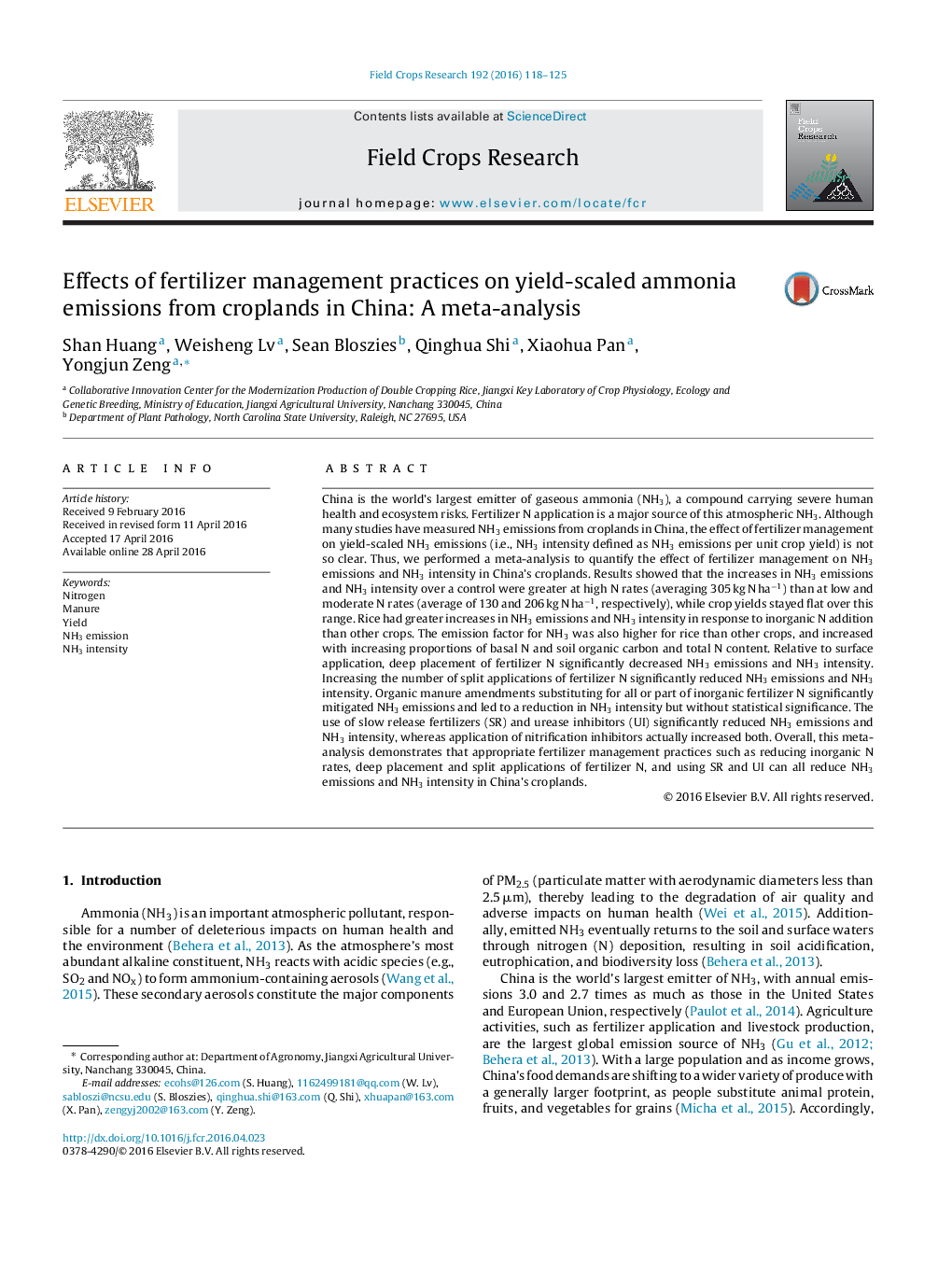| کد مقاله | کد نشریه | سال انتشار | مقاله انگلیسی | نسخه تمام متن |
|---|---|---|---|---|
| 6374496 | 1624671 | 2016 | 8 صفحه PDF | دانلود رایگان |
عنوان انگلیسی مقاله ISI
Effects of fertilizer management practices on yield-scaled ammonia emissions from croplands in China: A meta-analysis
ترجمه فارسی عنوان
تأثیر شیوه های مدیریت کود بر میزان تولید آمونیاک مقیاس پذیری شده از گیاهان در چین: یک متاآنالیز
دانلود مقاله + سفارش ترجمه
دانلود مقاله ISI انگلیسی
رایگان برای ایرانیان
موضوعات مرتبط
علوم زیستی و بیوفناوری
علوم کشاورزی و بیولوژیک
علوم زراعت و اصلاح نباتات
چکیده انگلیسی
China is the world's largest emitter of gaseous ammonia (NH3), a compound carrying severe human health and ecosystem risks. Fertilizer N application is a major source of this atmospheric NH3. Although many studies have measured NH3 emissions from croplands in China, the effect of fertilizer management on yield-scaled NH3 emissions (i.e., NH3 intensity defined as NH3 emissions per unit crop yield) is not so clear. Thus, we performed a meta-analysis to quantify the effect of fertilizer management on NH3 emissions and NH3 intensity in China's croplands. Results showed that the increases in NH3 emissions and NH3 intensity over a control were greater at high N rates (averaging 305 kg N haâ1) than at low and moderate N rates (average of 130 and 206 kg N haâ1, respectively), while crop yields stayed flat over this range. Rice had greater increases in NH3 emissions and NH3 intensity in response to inorganic N addition than other crops. The emission factor for NH3 was also higher for rice than other crops, and increased with increasing proportions of basal N and soil organic carbon and total N content. Relative to surface application, deep placement of fertilizer N significantly decreased NH3 emissions and NH3 intensity. Increasing the number of split applications of fertilizer N significantly reduced NH3 emissions and NH3 intensity. Organic manure amendments substituting for all or part of inorganic fertilizer N significantly mitigated NH3 emissions and led to a reduction in NH3 intensity but without statistical significance. The use of slow release fertilizers (SR) and urease inhibitors (UI) significantly reduced NH3 emissions and NH3 intensity, whereas application of nitrification inhibitors actually increased both. Overall, this meta-analysis demonstrates that appropriate fertilizer management practices such as reducing inorganic N rates, deep placement and split applications of fertilizer N, and using SR and UI can all reduce NH3 emissions and NH3 intensity in China's croplands.
ناشر
Database: Elsevier - ScienceDirect (ساینس دایرکت)
Journal: Field Crops Research - Volume 192, June 2016, Pages 118-125
Journal: Field Crops Research - Volume 192, June 2016, Pages 118-125
نویسندگان
Shan Huang, Weisheng Lv, Sean Bloszies, Qinghua Shi, Xiaohua Pan, Yongjun Zeng,
